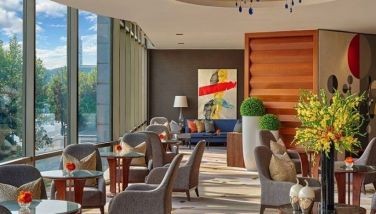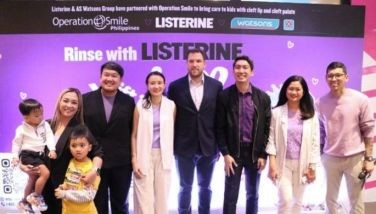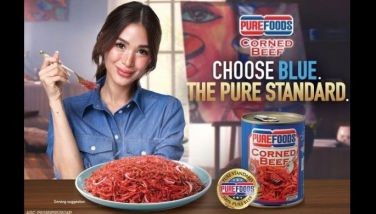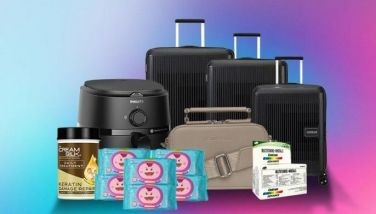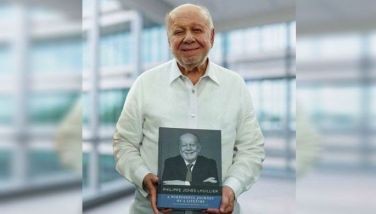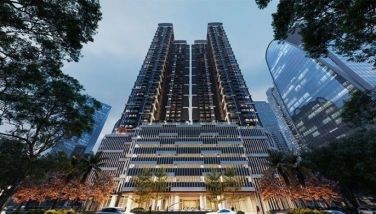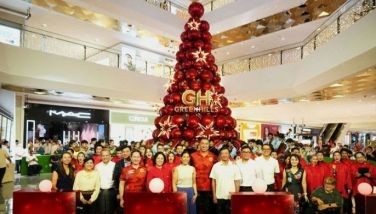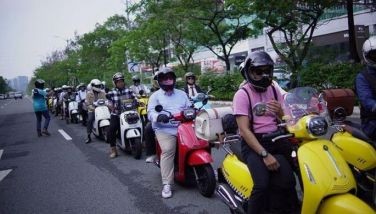Survival Mode
February 13, 2002 | 12:00am
Your market is shrinking. Last year, the passenger car market shrunk approximately 20 percent from the previous year, while the AUV market actually registered a welcome 2-percent growth rate. While industry analysts and market planners say that that what’s left of the shrinking market will continue to rev it up in a Toyota, breeze away with an Isuzu, or take the family on an adventure with a Mitsubishi, you have to stick to your guns with an exclusively all-car (and one SUV) product lineup.
Blame it on Osama. Blame it on the global decline in consumer spending which was already happening before Sept. 11. Hell, blame it on whatever. Last week, STAR Motoring sat down with one of the biggest dealership networks in the country to find out how it does business in hard times, as represented by Honda Cars Pasig Branch Manager and Vice President Luis Santamaria.
Did we say one of the biggest dealership networks in the country? Honda Cars Pasig is a branch of Honda Cars Makati, Inc. (HCMI), which also has branches in Makati, Alabang, Shaw, Cebu, Cagayan de Oro, Negros Occidental, and Iloilo. The group has the distinction of being the first Honda dealer in the country, first setting up operations with a one-unit showroom back in 1991 in Parañaque. A year later, the Magallanes branch opened. Now with branches in the most promising locations, the HCMI group has an impressive number of awards for sales performance and customer satisfaction. As a company, HCMI employs roughly 600 people.
Though most marketing initiatives are carried out by Honda Cars Philippines, Inc. (the country’s exclusive manufacturer and distributor of Honda cars), the HCMI group has the liberty to conduct customer retention programs ranging from simple "best practices" procedures for sales and services personnel to special events and promos. HCMI currently has the "Mileage Plus" and "Preventive Maintenance Frequency" cards, which offer discounts on parts, accessories, labor, as well as coupons and freebies.
To the casual reader, these might sound average for the course. To customers who feel the crunch of rising costs, any help is welcome. Besides, happy customers ensure a more-or-less healthy bottomline for any dealer who, if he can’t sell a whole car today, can feel better knowing he’s doing okay on the parts and service revenue stream. There’s also the matter of very possibly seeing a repeat customer several years down the road, if not a new customer to add to his portfolio.
Beyond these efforts, there’s also the good old reputation to rely on. "In any automotive dealership, you simply have to be out there. Your presence should be very much felt considering that the products you sell come from just one source. The cars you see in our showrooms are the same as in another (competing) Honda dealer’s. The key element then is how well your sales people will handle the account... the servicing. There’s pre-selling, actual negotiations, the sales transaction, and post-sales, which sell the next set (of products). As far as marketing is concerned, since we’re a group of dealers and the manufacturer triggers the marketing moves, we align our directions with the manufacturer." Santamaria said.
To differentiate themselves from competing dealers, "Word of mouth pa rin ang key. Somebody who buys the car today, and is so pleased with the way the transaction is handled, such as with the delivery of the car and the after-sales call, will talk. That leads to referrals and succeeding sales. The key is in the sales servicing, both in vehicle sales and the service and parts network. The business is automotive, but it’s readily classifiable as a service industry. Hindi yung after the sale, wala na. You’ve got to work on that person, especially if it’s a fleet account since it’s a key decision-maker in a company or influential person in a community. These are the ones who will give you additional business and help you grow."
Some statistics: According to HCMI, 53 percent of its clientele fall under fleet accounts, while the rest are individual buyers. However, the distribution depends on the location of the dealer. The Alabang branch, for example, is in a mostly residential area, and therefore has plenty of individual buyers. The Shaw branch, on the other hand, is mostly fleet because it’s in a mostly commercial area. Forty-nine percent are repeat buyers, 29 percent shifted from a non-Honda, and 11 percent are first-time buyers. Reputation can obviously go a long way, but it isn’t everything.
Since hard times got even harder with 9/11, plenty of manufacturers have resorted to aggressive financing and promo deals to entice consumers. To some degree the strategy has worked. Overall passenger car sales jumped 19 percent last month, with Honda Cars Philippines in third place overall behind Toyota and Mitsubishi, holding 12.2 percent of total market share despite having a rather limited product lineup of the City, Civic, Accord, CR-V, and HR-V.
"After the past four or five months, everybody has been holding on to their cash and staying liquid. Then here comes a financial institution with an attractive interest plan, which also drives the market to think, ‘Why not get a car now and get a good rate? Two, three years down the road, the car might be more expensive?’... Right now, about 60 percent are cash buyers, and 40 percent are on financing," Santamaria said.
"Definitely, sales have been affected by the economic situation. The delay-of-purchase is very evident," he added. It’s a far cry from 1996, HCMI’s best year ever, when cars were so in-demand that dealers couldn’t stock up on enough cars to sell. Now, "this is when you see yung galing ng sales people mo." Since the market started falling in late 1997, HCMI also took on the initiative to standardize procedures and reporting, implementing Management Information Systems, and minimizing in-house competition among HCMI’s dealers, thereby keeping unnecessary costs as much as possible.
Honda has been the number one passenger car manufacturer for the past six consecutive years, and the challenge now is to retain that position for yet another year and even beyond. Toyota has been noticeably on a roll these days with an aggressive marketing campaign and a radically redesigned Corolla Altis. The Altis, of course, is the main competitor of the Civic, which is Honda’s bread-and-butter product. Combine that with the AUV scourge, 9/11 and its consequences, and the prevailing economic conditions even before and it’s hard not to feel like you’ve been Pearl Harbored.
HCPI, of course, has been doing its best to keep its product lineup abreast (in terms of sales) of the competitions’ more demand-friendly lineup of cars, SUVs, and those darn AUVs in terms of pricing, financing deals, and product and service quality. Speaking from the point-of-purchase perspective, from the figurative front lines, "We can’t afford to not work in harmony with HCPI. There’s a little friction between HCMI and HCPI, of course, but we always manage to put ourselves in a win-win situation on things like supplies of cars and parts, marketing strategies, and the like," Santamaria explained.
"I guess we are in a survival mode. We’re trying to overcome these challenges and keep our head above the water. There are times when we have to submerge, but we’ll just have to come up for air again. I’m hoping that change is just around the corner. We always look at things very positively. We look at the situation and make the necessary operational adjustments. [HCMI] has been here for 10 years and we intend to stay and expand further. Timing lang."
Blame it on Osama. Blame it on the global decline in consumer spending which was already happening before Sept. 11. Hell, blame it on whatever. Last week, STAR Motoring sat down with one of the biggest dealership networks in the country to find out how it does business in hard times, as represented by Honda Cars Pasig Branch Manager and Vice President Luis Santamaria.
Did we say one of the biggest dealership networks in the country? Honda Cars Pasig is a branch of Honda Cars Makati, Inc. (HCMI), which also has branches in Makati, Alabang, Shaw, Cebu, Cagayan de Oro, Negros Occidental, and Iloilo. The group has the distinction of being the first Honda dealer in the country, first setting up operations with a one-unit showroom back in 1991 in Parañaque. A year later, the Magallanes branch opened. Now with branches in the most promising locations, the HCMI group has an impressive number of awards for sales performance and customer satisfaction. As a company, HCMI employs roughly 600 people.
Though most marketing initiatives are carried out by Honda Cars Philippines, Inc. (the country’s exclusive manufacturer and distributor of Honda cars), the HCMI group has the liberty to conduct customer retention programs ranging from simple "best practices" procedures for sales and services personnel to special events and promos. HCMI currently has the "Mileage Plus" and "Preventive Maintenance Frequency" cards, which offer discounts on parts, accessories, labor, as well as coupons and freebies.
To the casual reader, these might sound average for the course. To customers who feel the crunch of rising costs, any help is welcome. Besides, happy customers ensure a more-or-less healthy bottomline for any dealer who, if he can’t sell a whole car today, can feel better knowing he’s doing okay on the parts and service revenue stream. There’s also the matter of very possibly seeing a repeat customer several years down the road, if not a new customer to add to his portfolio.
Beyond these efforts, there’s also the good old reputation to rely on. "In any automotive dealership, you simply have to be out there. Your presence should be very much felt considering that the products you sell come from just one source. The cars you see in our showrooms are the same as in another (competing) Honda dealer’s. The key element then is how well your sales people will handle the account... the servicing. There’s pre-selling, actual negotiations, the sales transaction, and post-sales, which sell the next set (of products). As far as marketing is concerned, since we’re a group of dealers and the manufacturer triggers the marketing moves, we align our directions with the manufacturer." Santamaria said.
To differentiate themselves from competing dealers, "Word of mouth pa rin ang key. Somebody who buys the car today, and is so pleased with the way the transaction is handled, such as with the delivery of the car and the after-sales call, will talk. That leads to referrals and succeeding sales. The key is in the sales servicing, both in vehicle sales and the service and parts network. The business is automotive, but it’s readily classifiable as a service industry. Hindi yung after the sale, wala na. You’ve got to work on that person, especially if it’s a fleet account since it’s a key decision-maker in a company or influential person in a community. These are the ones who will give you additional business and help you grow."
Some statistics: According to HCMI, 53 percent of its clientele fall under fleet accounts, while the rest are individual buyers. However, the distribution depends on the location of the dealer. The Alabang branch, for example, is in a mostly residential area, and therefore has plenty of individual buyers. The Shaw branch, on the other hand, is mostly fleet because it’s in a mostly commercial area. Forty-nine percent are repeat buyers, 29 percent shifted from a non-Honda, and 11 percent are first-time buyers. Reputation can obviously go a long way, but it isn’t everything.
Since hard times got even harder with 9/11, plenty of manufacturers have resorted to aggressive financing and promo deals to entice consumers. To some degree the strategy has worked. Overall passenger car sales jumped 19 percent last month, with Honda Cars Philippines in third place overall behind Toyota and Mitsubishi, holding 12.2 percent of total market share despite having a rather limited product lineup of the City, Civic, Accord, CR-V, and HR-V.
"After the past four or five months, everybody has been holding on to their cash and staying liquid. Then here comes a financial institution with an attractive interest plan, which also drives the market to think, ‘Why not get a car now and get a good rate? Two, three years down the road, the car might be more expensive?’... Right now, about 60 percent are cash buyers, and 40 percent are on financing," Santamaria said.
"Definitely, sales have been affected by the economic situation. The delay-of-purchase is very evident," he added. It’s a far cry from 1996, HCMI’s best year ever, when cars were so in-demand that dealers couldn’t stock up on enough cars to sell. Now, "this is when you see yung galing ng sales people mo." Since the market started falling in late 1997, HCMI also took on the initiative to standardize procedures and reporting, implementing Management Information Systems, and minimizing in-house competition among HCMI’s dealers, thereby keeping unnecessary costs as much as possible.
Honda has been the number one passenger car manufacturer for the past six consecutive years, and the challenge now is to retain that position for yet another year and even beyond. Toyota has been noticeably on a roll these days with an aggressive marketing campaign and a radically redesigned Corolla Altis. The Altis, of course, is the main competitor of the Civic, which is Honda’s bread-and-butter product. Combine that with the AUV scourge, 9/11 and its consequences, and the prevailing economic conditions even before and it’s hard not to feel like you’ve been Pearl Harbored.
HCPI, of course, has been doing its best to keep its product lineup abreast (in terms of sales) of the competitions’ more demand-friendly lineup of cars, SUVs, and those darn AUVs in terms of pricing, financing deals, and product and service quality. Speaking from the point-of-purchase perspective, from the figurative front lines, "We can’t afford to not work in harmony with HCPI. There’s a little friction between HCMI and HCPI, of course, but we always manage to put ourselves in a win-win situation on things like supplies of cars and parts, marketing strategies, and the like," Santamaria explained.
"I guess we are in a survival mode. We’re trying to overcome these challenges and keep our head above the water. There are times when we have to submerge, but we’ll just have to come up for air again. I’m hoping that change is just around the corner. We always look at things very positively. We look at the situation and make the necessary operational adjustments. [HCMI] has been here for 10 years and we intend to stay and expand further. Timing lang."
BrandSpace Articles
<
>
- Latest
Latest
Latest
August 16, 2024 - 11:00am
By Euden Valdez | August 16, 2024 - 11:00am
June 18, 2024 - 2:55pm
June 18, 2024 - 2:55pm
Recommended






